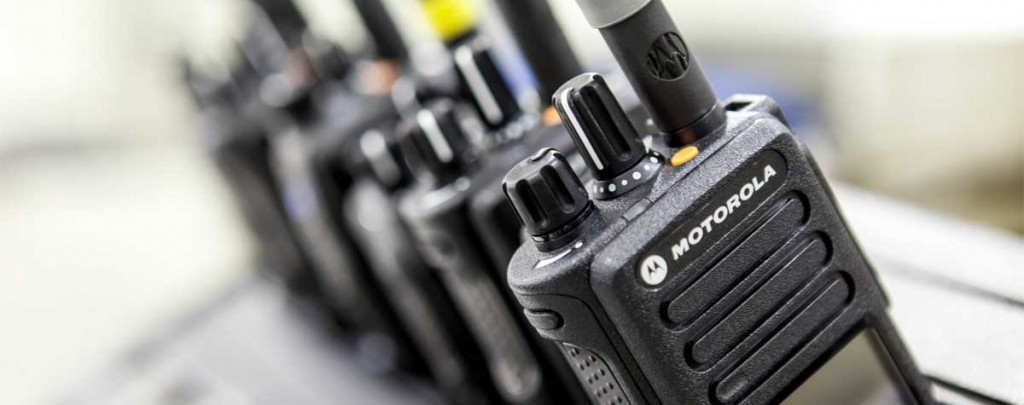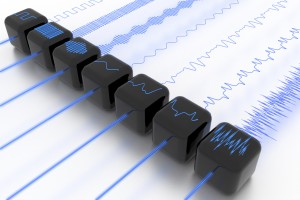
Analog radio is the traditional type of radio, and digital radio is the newest radio technology, each is uniquely different. Analog two-way radios were originally introduced around 1933 to the world of business, but at this point had already been in use by the U.S. military for 20 years. Originally, the use of analog radio was limited to a small population, but it has since ballooned into a much more popular form of communication. Radios offer such a reliable form of communication that commercial, military, industrial and individuals employ them on a daily basis. As a result, we have needed to come up with new ways to keep radio waves open to all.
Analog has been around for a long time, during which time innovation has reached its peak with this form of technology. When there was nothing left to add to analog, digital radio systems were invented in order to allow for the feature-rich options today’s advancing society demands.
Signal types vary between analog and digital radios but these two types of radios also have many other differences, such as sound quality and price points. Thanks to the invention of digital radio, wireless communication has been able to grow and expand. Improvements of digital radio includes:
- A much greater calling range
- Better voice quality
- Increase in reliable coverage
- Advanced software availability
These are just some of the advantages to digital platforms. Analog radio has its own beneficial qualities as well. Analog radio has been the primary form of wireless communication via two-way radios since the origin of its development. Even to this day the majority of radio systems still operate on analog mode. As the world of digital technology grows, more and more professionals are switching from analog to digital.
Traditional analog two-way radios typically come with standard options, such as push-to-talk, scanning, limited encryption options and simple one-on-one or group conversations. There are many additional tasks analog radios are capable of performing thanks to innovative individuals throughout history.
Even the original cell phones operated via analog. As more and more people began using cell phones the platform was switched to digital.
Digital radios vary in what they have to offer, some offer the exact same as analog radios, and others come with additional features. Depending on manufacturer and the type of radio you purchase or rent, the included features will vary greatly. All digital radios pretty much guarantee 30-50% increased battery life over analog radios. This is because the digital radio transmitter does not run 24/7.
A standard analog radio is going to decrease in signal the closer you get towards its maximum range, at which point all you hear is white noise. On the other hand, a digital radio is going to remain much more consistent in sound quality regardless of distance to or from the maximum range.
Today’s analog radios use frequency modulation (FM), which creates a constant wave with the voice signal. This is a rather simple system to install, which makes analog radios more affordable. Despite the lower price point, popularity of analog radios remains on the decline.
The numbers 1 or 0 represents digital signals. Depending on the number the voltage values differ. The digital signal includes an algorithm that can identify talking vs. background noise; this means communication is much clearer. A wireless digital signal is considered equally reliable to a wired digital signal.
Advantages of Analog Radio
- There are a lot of accessories and add-ons available due to the extent of time analog radios have been around.
- Analog systems are easy to use and generally well understood by the public.
- These systems make productive use of bandwidth.
Disadvantages of Analog Radio
- In most cases you can only have one two-way conversation going on at any given time using the same channel.
- Receivers and transmitters are made to fit particular transmissions. The devices can be upgraded but the technology can’t be.
- Software for business applications is not available for analog.
Advantages of Digital Radios
- More conversations can take place on one channel.
- Unit ID, enhanced text messages and status buttons can all be embedded into a digital radio channel.
- Your bandwidth consumption is reduced with digital radios.
- Both existing infrastructure and antenna systems can be used for transmitting digital signals.
- Background noise greatly reduced due to advanced algorithms that can detect the difference between talking and background noise.
- Many new software applications are available all of the time.
- Digital platforms enable you to use both digital and analog radios simultaneously.
Disadvantages of Digital Radios
- Takes more time for first-time users to learn how to use.
- Digital signals will not tolerate RF (radio frequency) signals, and as a result if there is ever too much RF noise the signal can completely drop in error.
- Due to the fact it is newer and more technologically advanced it is also more expensive. (Reference)

 Water resistant two-way radio technology is an important advancement in many industries, allowing work to continue regardless of weather or water-related accidents. We carry a number of waterproof two-way radios that employ the latest technology in order to keep you connected no matter what.
Water resistant two-way radio technology is an important advancement in many industries, allowing work to continue regardless of weather or water-related accidents. We carry a number of waterproof two-way radios that employ the latest technology in order to keep you connected no matter what. 
 VHF (Very High Frequency) and UHF (Ultra High Frequency) come with distinct pros and cons, understanding these differences will help you identify the best signal frequency for your two-way radio needs. For instance, UHF does not travel as far as VHF but may grant higher bandwidth occupation.
VHF (Very High Frequency) and UHF (Ultra High Frequency) come with distinct pros and cons, understanding these differences will help you identify the best signal frequency for your two-way radio needs. For instance, UHF does not travel as far as VHF but may grant higher bandwidth occupation. Two-way radios have a specific range they operate within and anything outside of that will cause your radio to lose signal. A radio antenna booster, or a signal booster of any kind, will help extend your two-way radio range. Radio range can be increased through an extender, repeater or booster. Not only do radio antenna boosters and extenders increase the range you have to communicate, but also they provide clearer voice quality for ease of communication.
Two-way radios have a specific range they operate within and anything outside of that will cause your radio to lose signal. A radio antenna booster, or a signal booster of any kind, will help extend your two-way radio range. Radio range can be increased through an extender, repeater or booster. Not only do radio antenna boosters and extenders increase the range you have to communicate, but also they provide clearer voice quality for ease of communication.